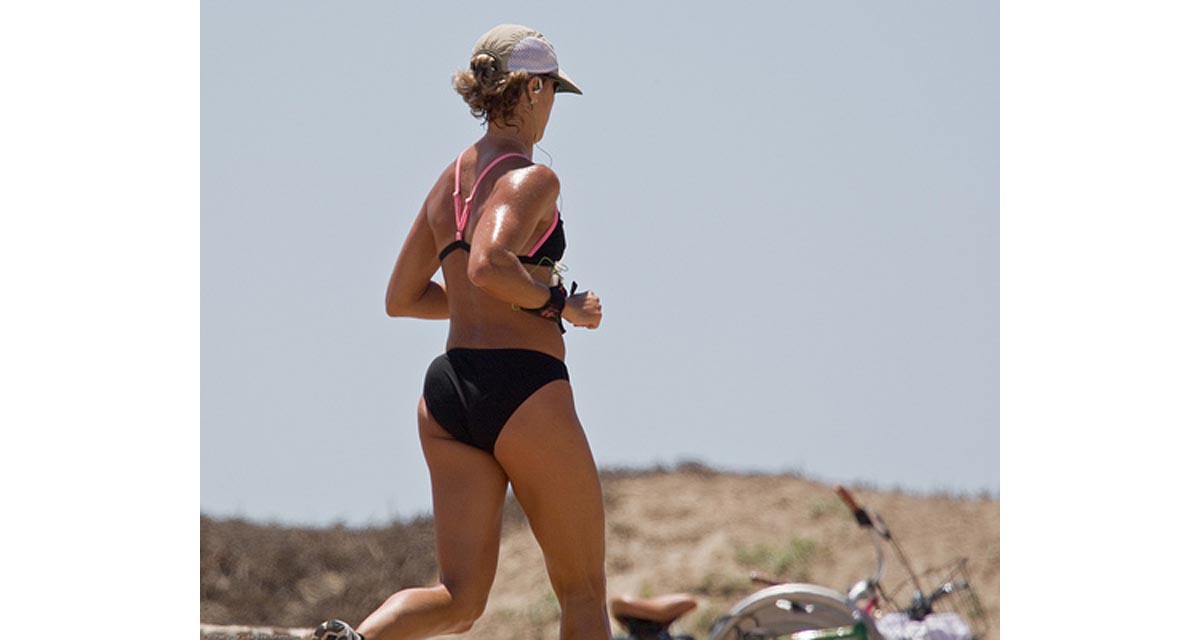Table of Contents
Every year there are headlines about teens and young adults in the USA dying while exercising in summer heat. With global warming, deaths from heat stroke are even more common in places that historically do not have extremely hot summers.
The Journal of Athletic Training reports a study of ice collars to be worn around the neck as a tool for preventing heat exhaustion and heat stroke.
Exercise physiologists at Roehampton University in London heated an exercise room to what they called a "stifling" 31°C (87° F). (Unpleasant temperatures are relative. In Texas, where I live, 87° F on a summer day might be a record low.) They recruited volunteers to do a timed run on treadmills with and without an ice-filled neck collar. Not surprisingly, the volunteers could cover a significantly larger distance without any discomfort if they wore the ice pack.

In a second round of testing, the researchers asked a different group of volunteers to exercise in the hot room to the point of exhaustion. The scientists found that volunteers who wore the ice collars could exercise considerably longer, but that when they stopped, their core temperatures were considerably higher. Wearing an ice pack was associated with higher body temperature.
A higher body temperature, of course, is associated with greater risk of heat exhaustion and heat stroke, so what was going on?
The Roehampton University researchers concluded that wearing the ice collar masked the symptoms of heat exhaustion. (None of the volunteers was allowed to experience heatstroke, although some of the volunteers' rectal temperatures exceeded 40° C.) The volunteers' body temperatures went higher and higher, but they did not feel uncomfortable because the brain only registered the temperature of the skin at the neck.
Christopher James Tyler, a lecturer in sport and exercise physiology at Roehampton University and the lead author of the Journal of Athletic Training study, explained that ordinarily when an exerciser's core temperature reaches 40° C (104° F), the brain stops sending signals to the muscles that allow exercise and heating stops before heatstroke begins. When the neck is cooled, however, the brain is cooled and it does not stop exercise before heatstroke can occur.
So are ice collars safe for athletes? What about the older method of freezing a damp towel to drape over the shoulders or a wet bandana to put on the head before going out in the heat?
These cooling methods may give an athlete a competitive edge (assuming they do not cause a debilitating "brain freeze" headache when the cold cloth is applied to the skin), but at the cost of greater risk of heatstroke. "All-over" cooling methods such as overhead misters (popular in Arizona) and simple splash of water over the chest, arms, and legs offer much better protection against heat exhaustion and heatstroke. It is equally important to drink water before feeling thirsty, to maintain electrolytes, and to recognize that greater athletic performance despite heat is usually a sign the brain is not picking up the body's signals to seek cooling.
For comprehensive information about preventing exertional heatstroke, visit the Korey Stringer Institute pages at the University of Connecticut website.
- Tyler CJ, Sunderlund C. Cooling the neck region during exercise in the heat. J Athl Training. 2011 Jan-Feb,46(1):61-8.
- Photo courtesy by Mike Baird on Flickr: www.flickr.com/photos/mikebaird/2598635095/

